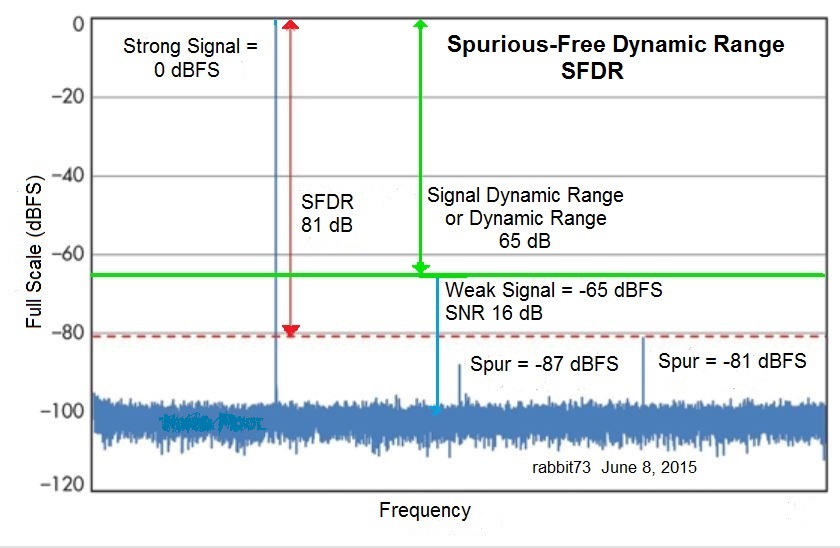Thanks for the information on the Viewsonics VSMA-601C.
Quote:
|
Won't adding the splitters for attenuation kill my weak stations though?
|
On the contrary, it might save a weak station, like WADL.
There is such a thing as a signal that is too strong; more is not always better.
If your signals are too strong, they can overload an amp or tuner. When an amp or tuner is overloaded, it creates spurious signals within the device itself from IMD (Intermodulation Distortion) that can damage your weakest signals.
It does seem counterintuitive to amplify a signal and then attenuate it, and it took me a long time to understand why it might help.
Yes, when you insert an attenuator of 1 dB, it will make All signals 1 dB weaker. But if you have IMD products being created from overload, they will be reduced 3 dB for every 1 dB of attenuation, giving you a net gain of 2 dB. So, if you insert 3 dB attenuator, it can improve the SNR of your weak signal by 6 dB.
I have done many overload tests; here are some of my results:
 THREE TYPES OF OVERLOAD
THREE TYPES OF OVERLOAD
There are three types of preamp or tuner overload, in order of increasing signal strength:
1. The strong signals almost cause enough intermodulation distortion (IMD) to interfere with the reception of weak desired signals, but the spurious signals are at or below the noise floor of the weak signals. This is the point that holl_ands uses in his preamp charts to obtain max SFDR (Spurious Free Dynamic Range). No damage will happen.
As the strongest signals continue to increase in strength, more of the weaker signals are damaged until you reach:
2. The strong signals cause overload to the preamp or tuner that makes it impossible to receive any signals. No damage will happen. The strongest signals are still there, but they can't be decoded because the IMD products have damaged them so that they contain more errors (high BER....bit error ratio/rate) than can be corrected by the FEC (forward error correction).
3. The signals are so strong that the input transistor is toast. You are not likely to encounter OTA signals that strong, unless you live next door to a high power transmitter and you have your high gain antenna aimed at the transmitter's antenna.
As a general rule, tuners can tolerate stronger signals than preamps before overload. The difference in strength is approx. equal to the preamp gain.
Intermodulation Distortion
The IMD creates new spurious signals within the preamp (or tuner) itself that can interfere with the reception of your weakest desired signals if the spurious signals are stronger than the noise floor of the weakest desired signals. The spurious signals are caused by the interaction between two or more of your strongest signals.
IMD is not the only distortion that can be created within the preamp; you can also have distortion caused by signals so strong that the top of the strong signals are clipped, which causes compression of the signals. This can be seen if you increase the input to the preamp by, for example, 10 dB and the output increases by less than 10 dB.
Spurious Free Dynamic Range
The Spurious Free Dynamic Range needed is the difference in strength between your strongest signal and your weakest desired signal, plus 16 dB for the SNR of the weakest signal, using the dBm Pwr scale on your tvfool report. This difference is expressed in terms of dB, not dBm, because the original units are the same. The difference between the strongest signal and the weakest signal is the Signal Dynamic Range/Dynamic Range, which is 16 db less than the SFDR, because it doesn't include the SNR of the weakest signal.

Another way to think of SFDR is from the top of the strongest signal down to the bottom (noise floor) of the weakest desired signal. The top of the spurious signals must be at or below the noise floor of the weak signals if they are not to cause interference. The Signal Dynamic Range is from the top of the strongest signal down to the top of the weakest desired signal.

